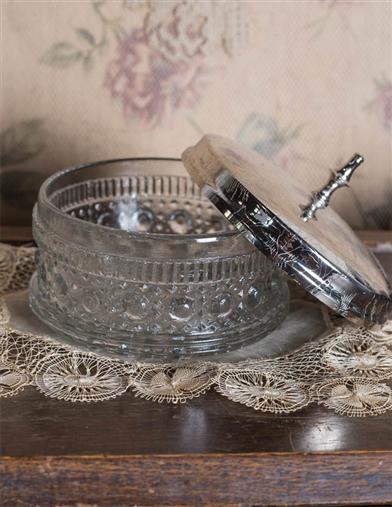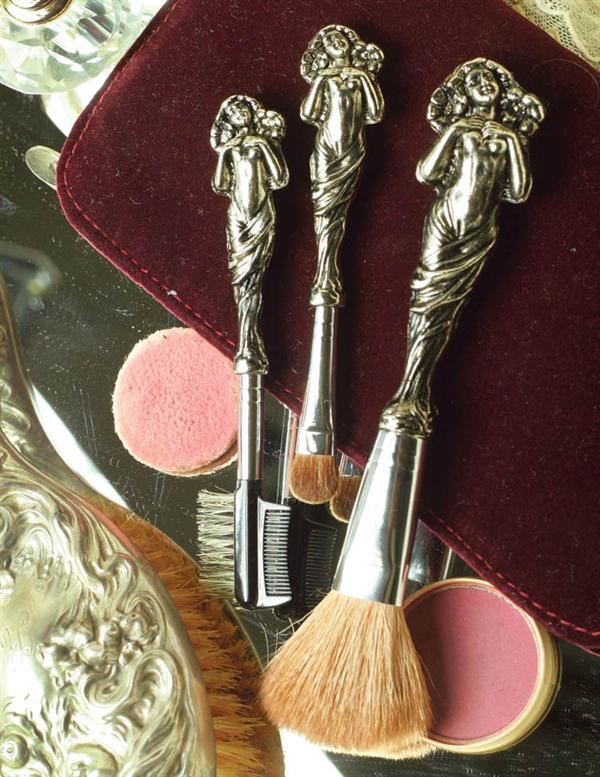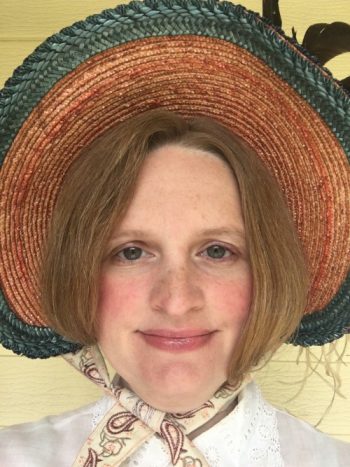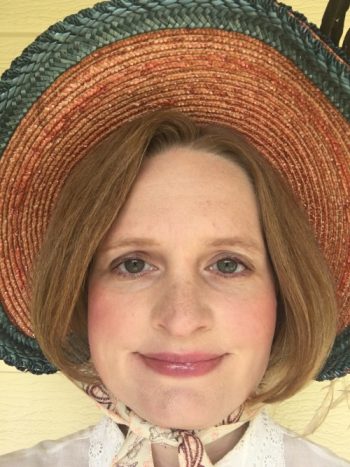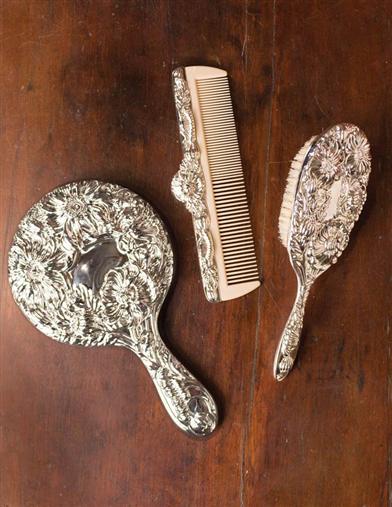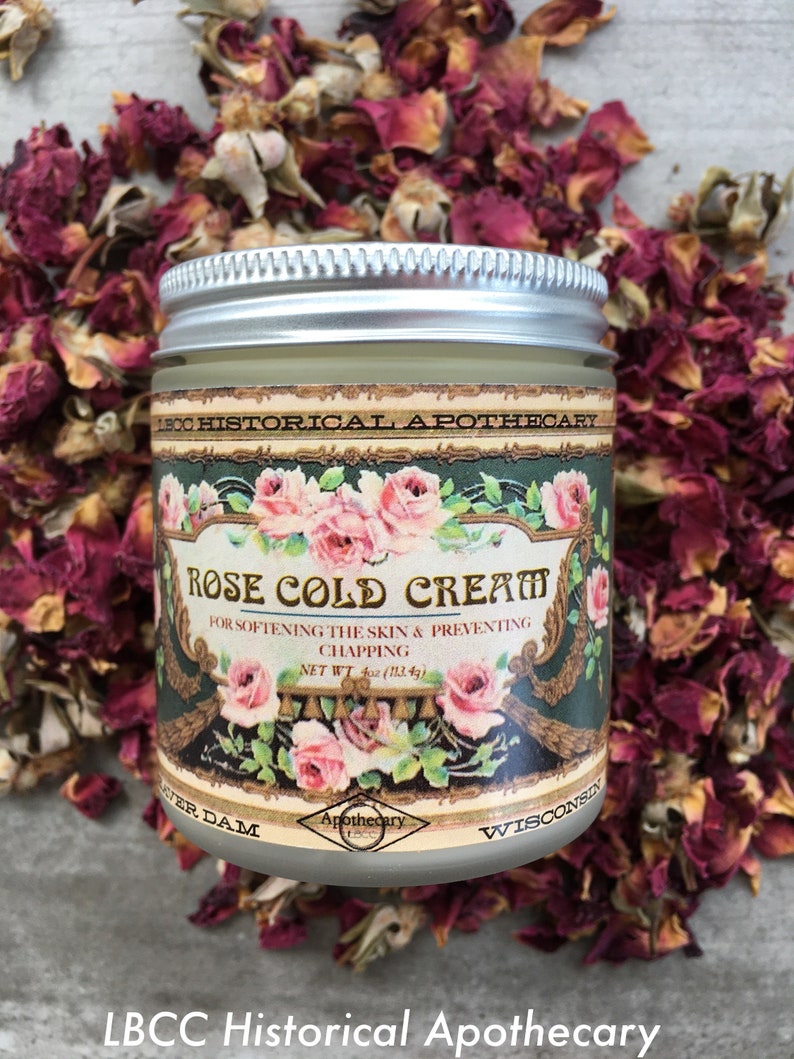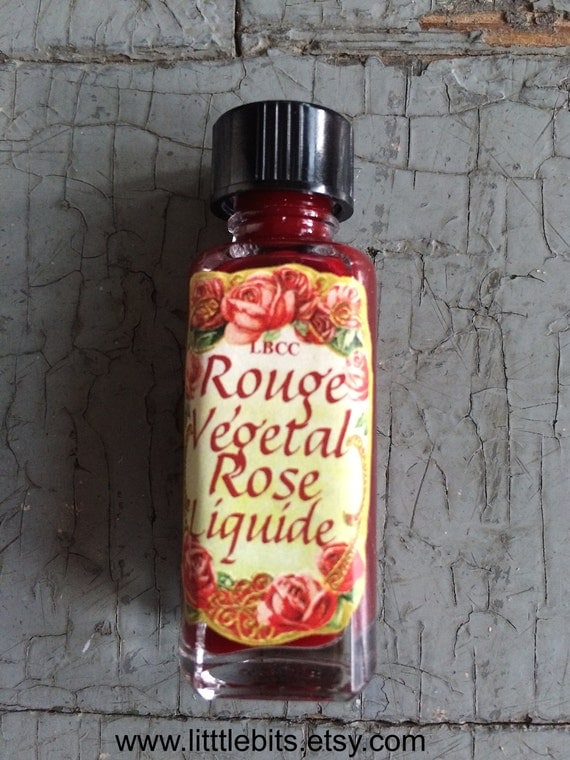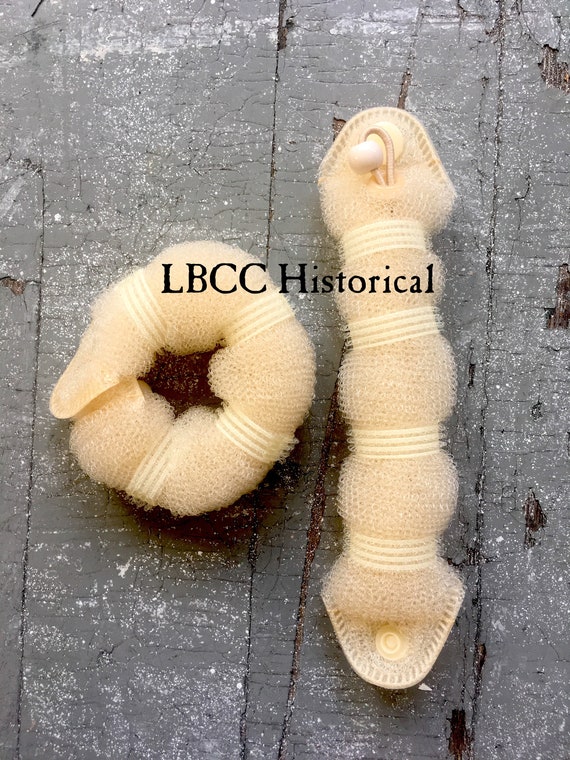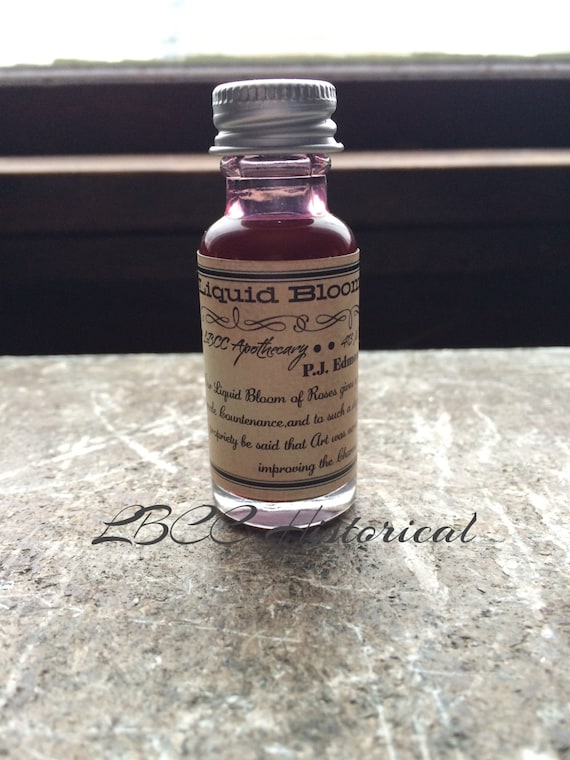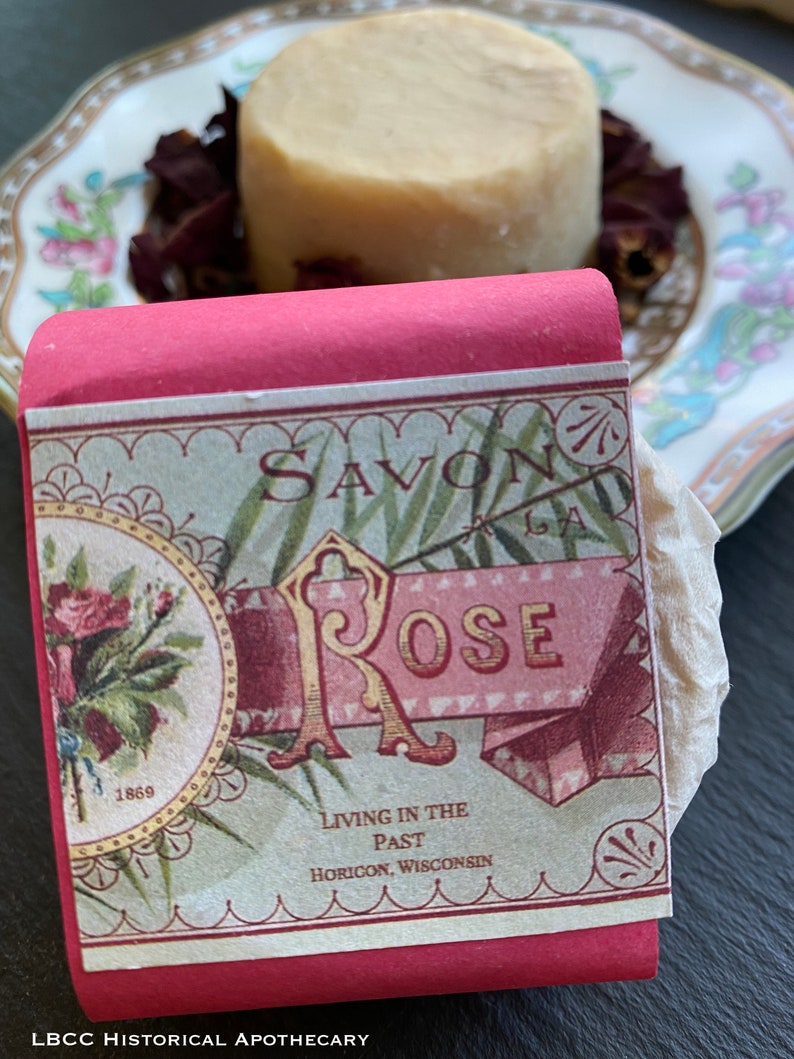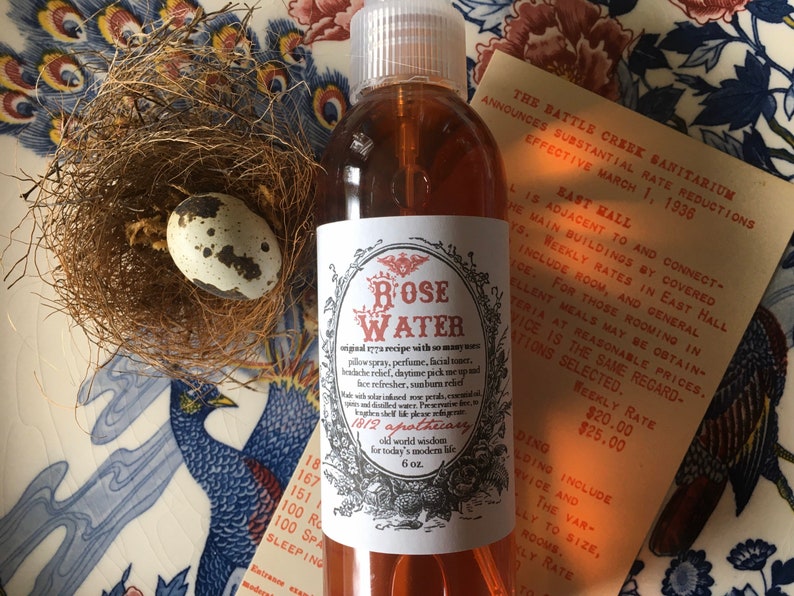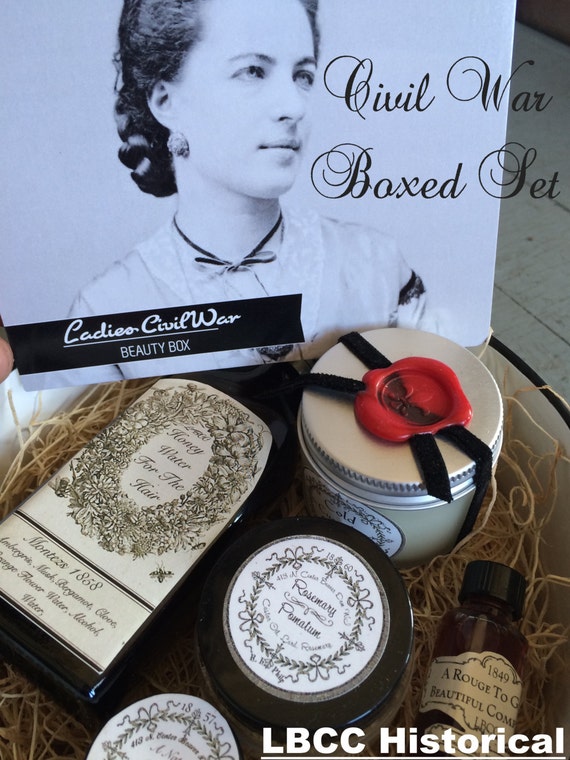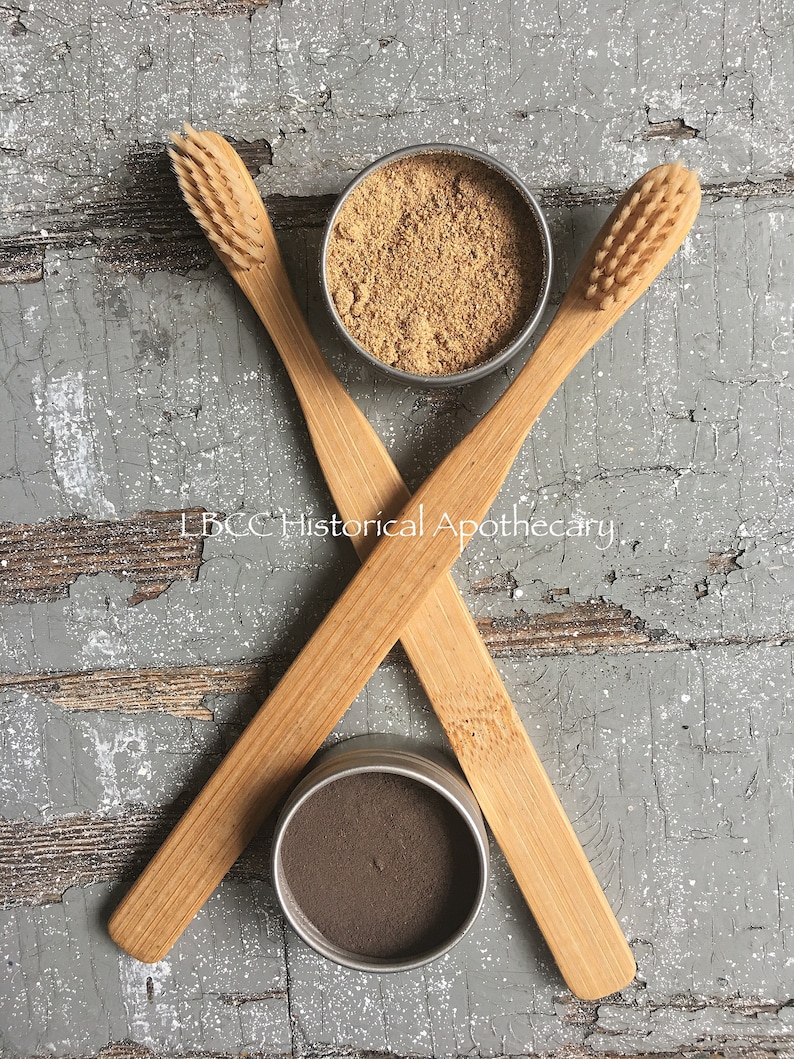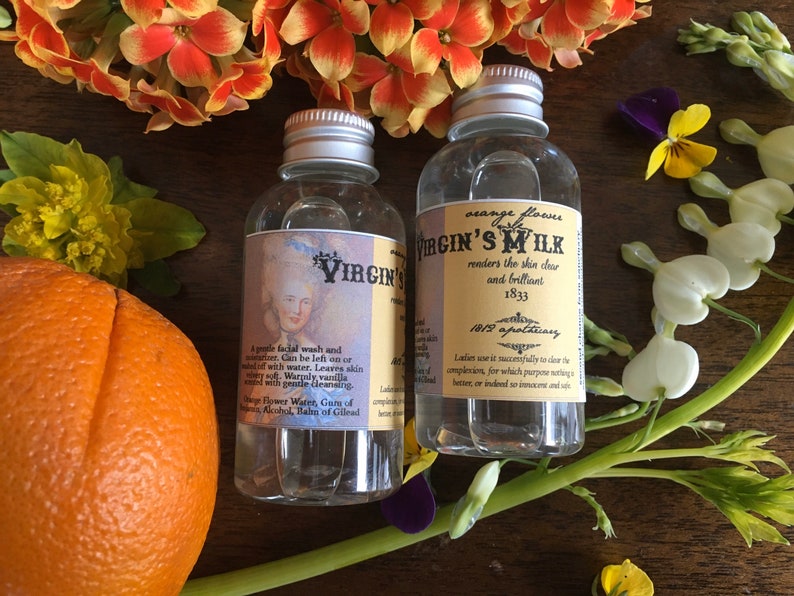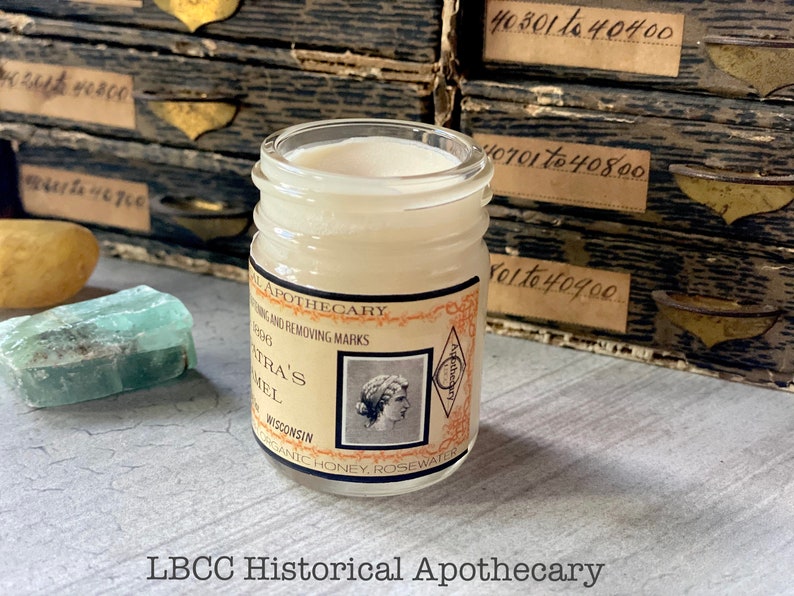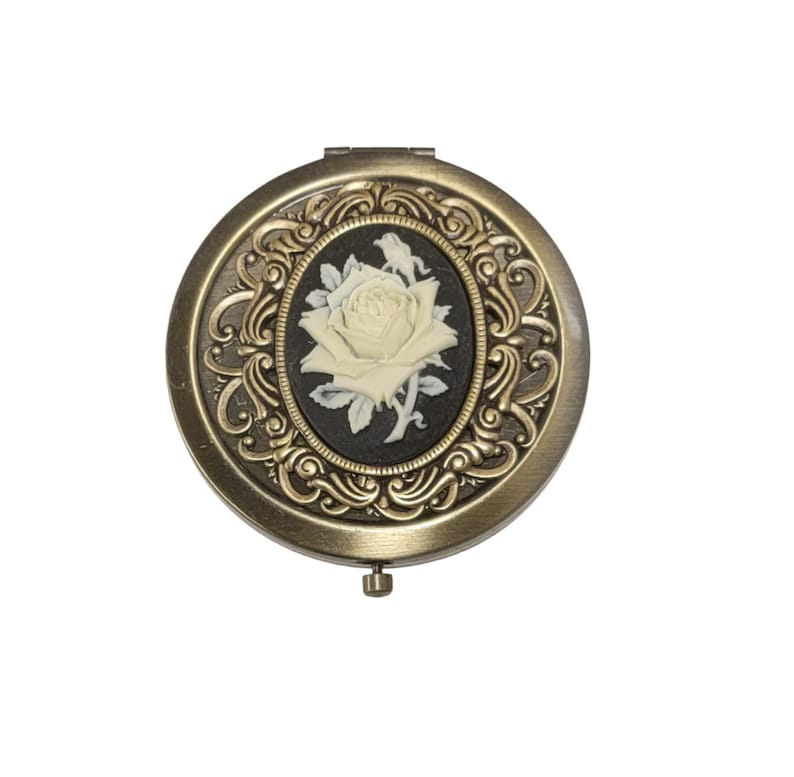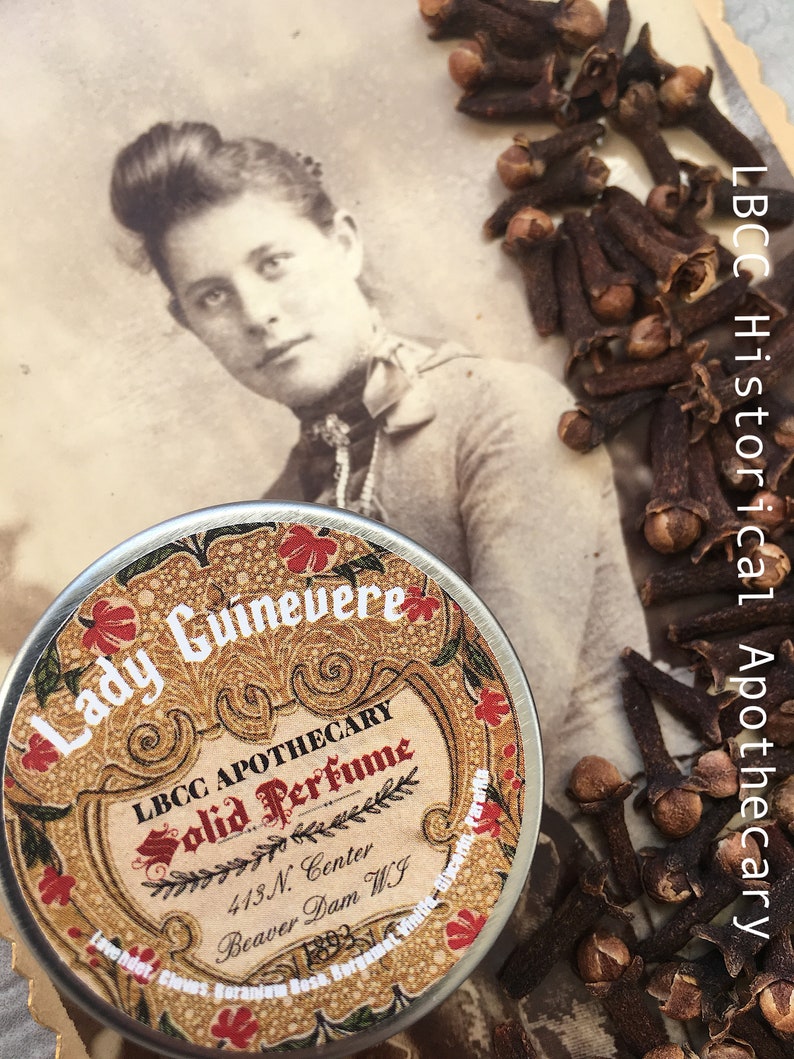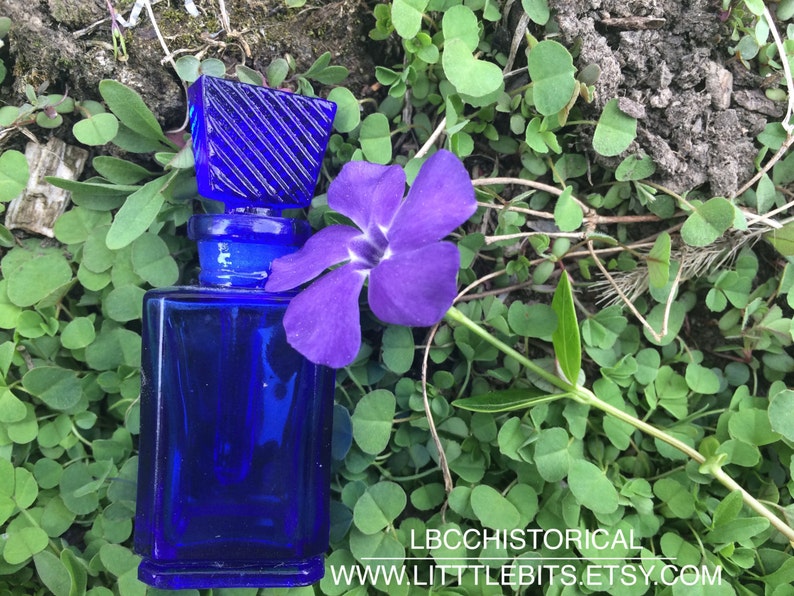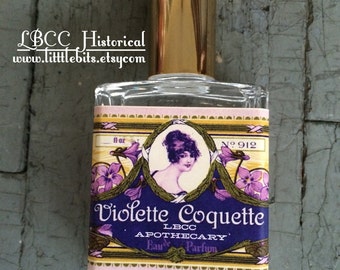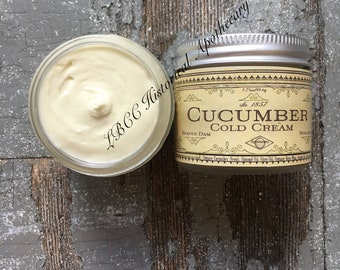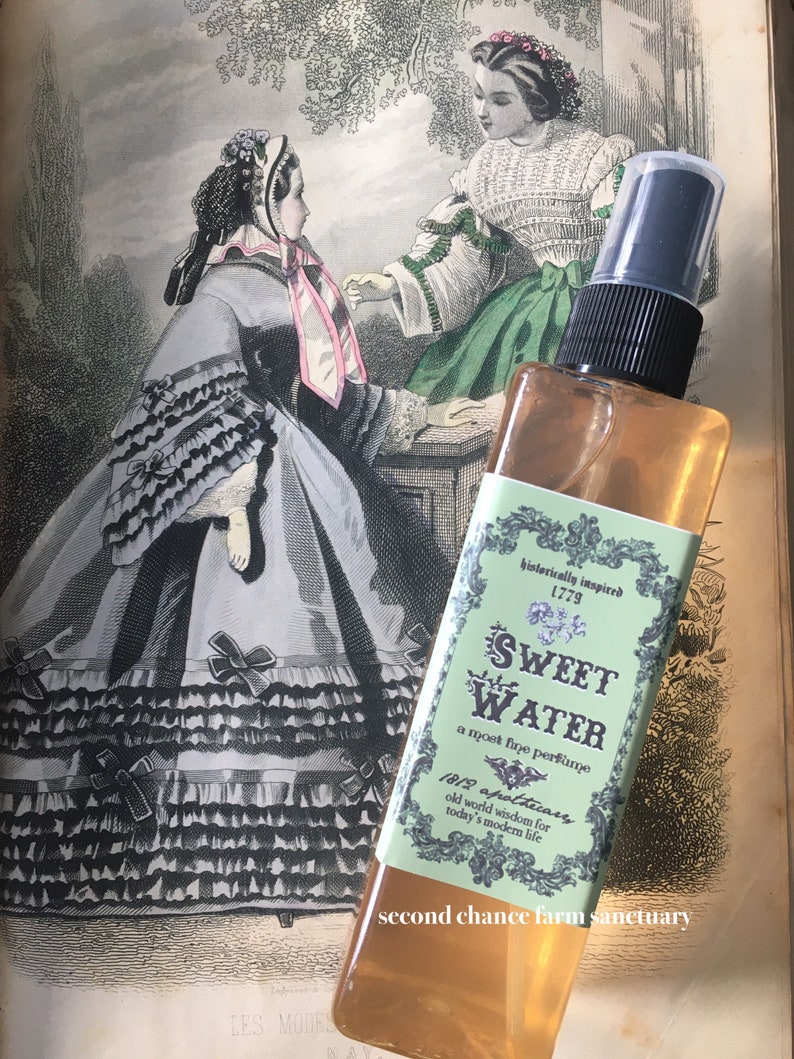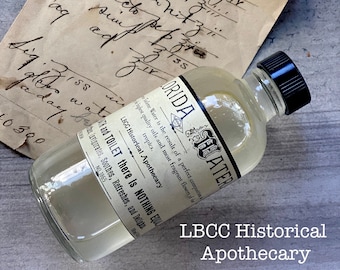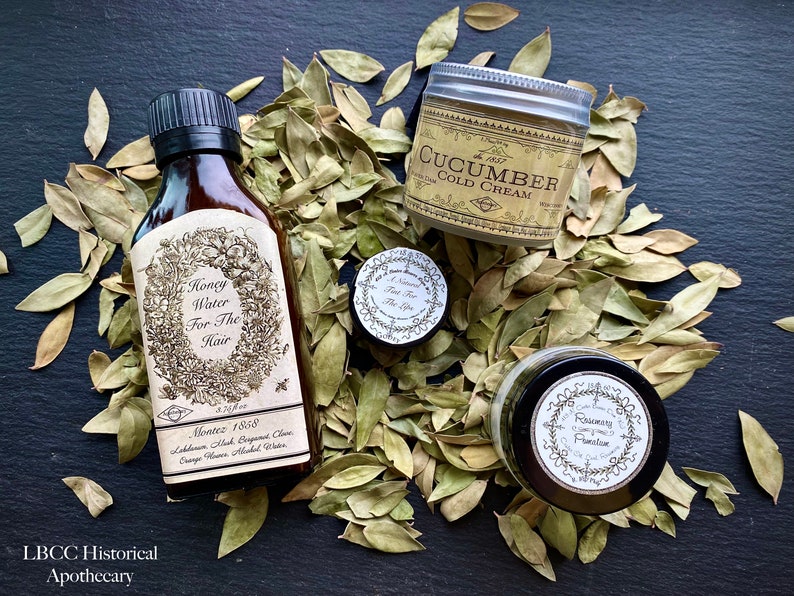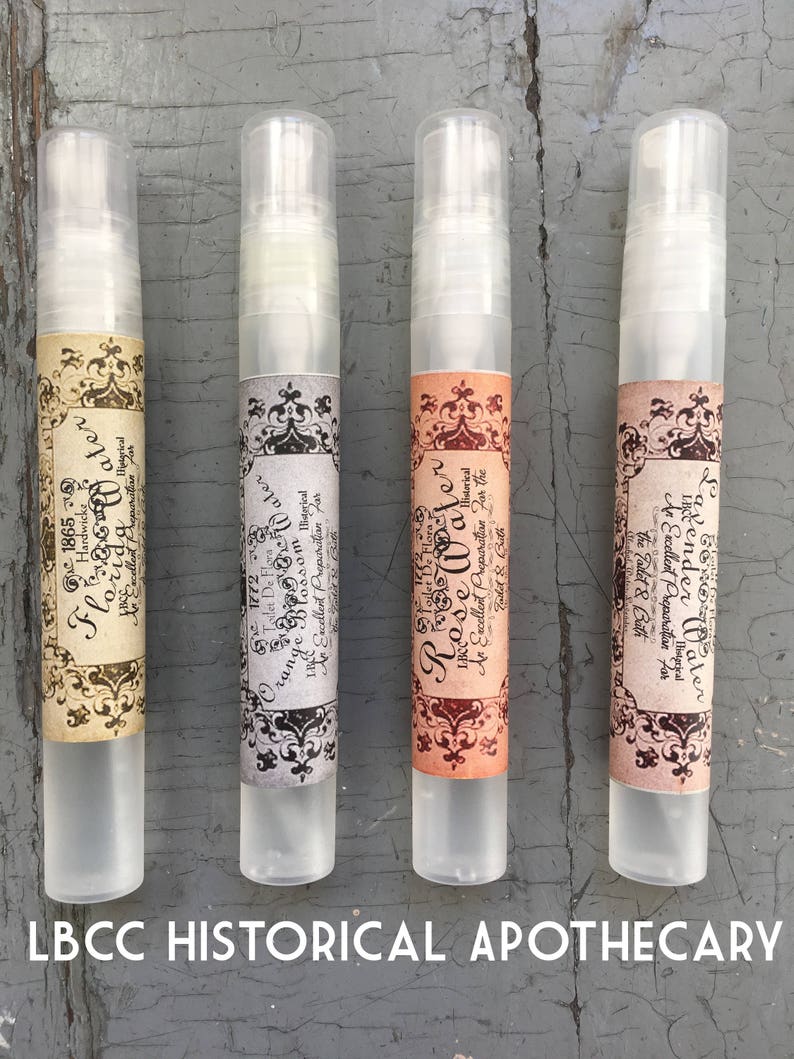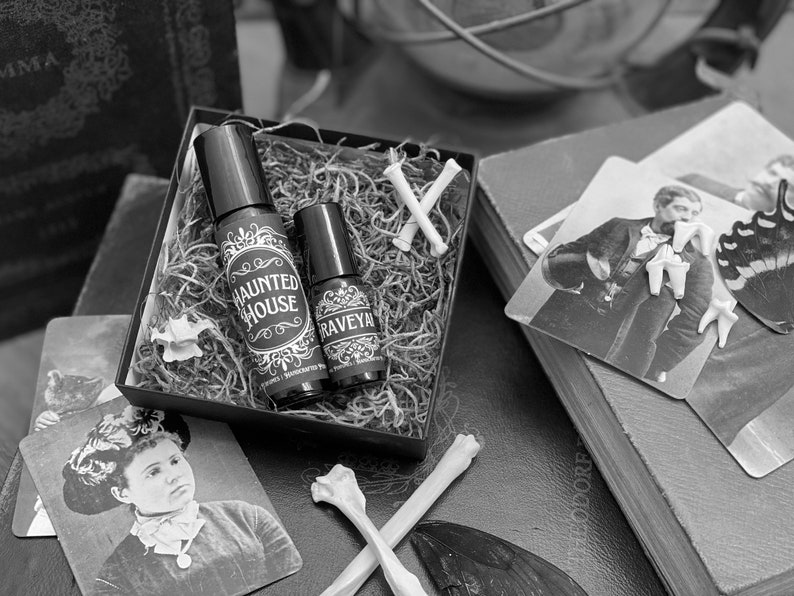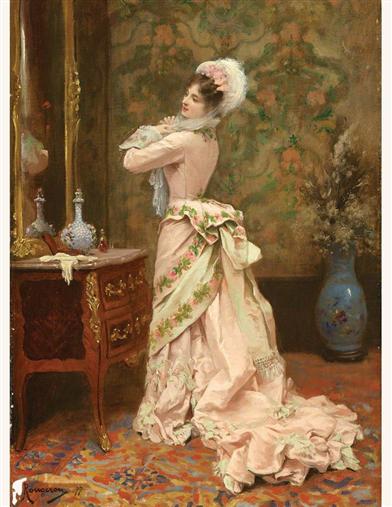
A Victorian Lady at her Vanity (Get this print here)
Victorian magazines, newspapers, advertisements, and the like continuously echoed that a lady should never let herself go. She must always maintain her beauty in order to find and keep her husband happy. A pretty face was also a welcome sight by men, and it was very important to keep their spirits up — especially during difficult times. While the message was always about beauty for men, there was a certain amount of pride women had for their own beauty. Victorian makeup was one way to enhance her appearance, although she would never admit to wearing it.
**This article is sponsored by Victorian Trading Co, which has a lovely collection of makeup brushes, bath products, and vanity cases inspired by the Victorian era. Links within may be affiliate links, meaning at no cost to you, we may receive a commission for purchases made after clicking. **
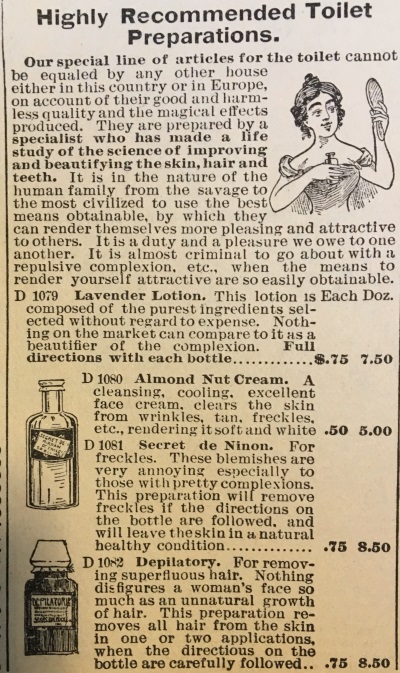
1897 Face Powders, Tonics, and Lotions in Sears Catalog
In religious circles, appearance was also important. Simple, natural beauty was a gift from God, and one not to be taken for granted. The use of Victorian makeup was frowned upon the strongest in these circles, while natural remedies such as pure water, healthy living, and inner contentment were encouraged.
Furthermore, attitude and habit could also aid in a beauty routine. Ladies would walk for rosy cheeks, rise early to make lips bright, and eat a light diet to reduce pimples. On the other hand, playing cards, reading novels, jealousy, and laziness all were said to create a poor appearance.
Using makeup in the Victorian era was a secret ritual. Most middle class women wore it, but only in the most subtle and natural way possible. Making homemade beauty products and cosmetics was a regular chore. There were, however, some available for purchase.
The following is a general history of Victorian makeup and guide to re-creating Victorian beauty with reproduction or modern makeup.
Victorian Makeup Products
“And, after dressing for the evening, look again at your reflection in the mirror, and study the effect. Do you resemble a painted doll or an elegant woman? Is the expression killed by cosmetics or improved?” – Gems of Deportment, 1881
Face Cream
For a lady to paint her face with makeup was full of controversy. Was it healthy to block her pores? What was she hiding? Could she be trusted? Why was she not accepting age with grace? The ideal Victorian beauty was one of a pale face, rosy cheeks, and big dark eyes. Pimples, freckles, and blemishes were unsightly. The first cosmetics were made by apothecaries and pharmacists to cure these problems of the skin. Eventually, national brands emerged, creating low-cost face creams advertised at young girls. Too costly for the very poor, lower- and middle-class girls could afford an occasional lotion. Directions for homemade creams and waters were a frequent addition to ladies’ magazines.
Some of these ingredients were rose, almond, elderflower, sugar, lavender, oatmeal, and lemons. Flowers were soaked in water and made into a nice face wash. Sugar scrubs cleaned the skin and opened pores.
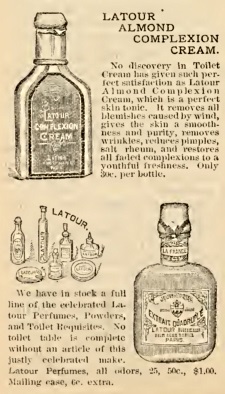
1895 Cold Cream (Top) and Perfume (Below)
Cold creams were made of almond oil, white wax, and spermaceti (Sperm whale oil). Endorsements by actresses and performers such as Lilly Langtry helped spread the word about the new industry of beauty products. It also reinforced the idea that makeup started in the theater and was only worn by immoral women and prostitutes. In reality, makeup was hardly worn by this class of women.
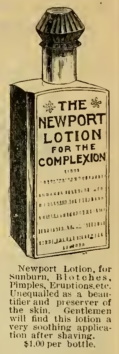
1890 Lotion for Facial Blemishes or Aftershave
Ready-made makeup products were full of red and white lead, mercury, belladonna, and other now-known poisons. Using them may not kill a woman, but they certainly did not improve her health. They did, however, make makeup colors richer and more durable. This is what drew countless woman to purchasing these makeups, usually by mail order, via pharmacists and sometimes at department stores, where they were kept hidden until requested.
Face Powder
The one acceptable Victorian makeup product was face powder. Indeed, it was found on most middle and upper-class ladies’ vanities. It was made of scented and lightly colored starch (similar to fine talcum powder and Victorian laundry soap). Powdered milk of magnesia, rice powder, French Chalk, and Venetian talc were also used. In 1877 Henry Tetlow discovered that dried and ground zinc oxide made an excellent pure white powder that did not grey when exposed to gas, candle, and coal fumes.
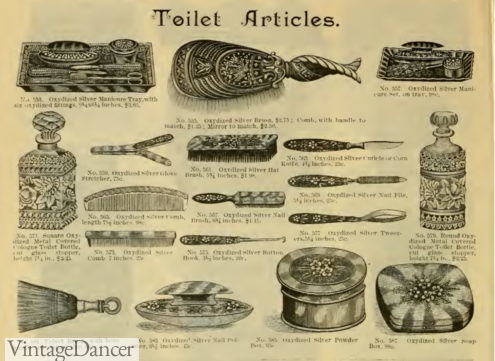
1890 Vanity Tools, Cases, Brushes
Pure white powder lightened the complexion. Color tinted powders covered up blemishes. Pink tinted powders acted as a blush. Blue tinted powders counteracted the yellow glow of gas and candlelight. The powder was cheap and easy to make or buy, and easily passed as a medicine rather than face paint. It was applied by placing a scoop into a cotton bag and dabbing it onto the skin. Around the turn of the century, a rabbit’s foot became widely used as a powder brush.
Face powder alone was prone to falling off the skin quickly. Applying a cream first held the powder on longer. This was the Victorian equivalent of applying foundation or concealer. However, it did not provide as much coverage as modern powders do. At best, it reduced the pinkest undertones and shine from oily skin.
Eye Makeup
Eyeshadow was not widely used until the late teens, however eyebrows and eyelashes were something that could be improved. Being born with fair hair was considered a birth defect. Darkening facial hair was necessary for many women to be attractive. To darken facial hair, charcoal, elderberry juice, Indian ink, and burnt clove paste were applied using fingers before wiping away any excess. Some of it could also be applied to the eyelid, making it the first attempt at eyeliner. Alternatively, a light smear of castor oil over the lid attracted light to the eyes without adding color.
Eyebrows could be plucked into a natural arch. Sometimes, eyelashes were trimmed with tiny scissors under the myth that they would grow back fuller.
Lipstick & Rouge
The most controversial and obvious “paint” a woman could use was a lip color. Made of ground beetles or plants and mixed with animal fat, cocoa butter, or wax, it was applied to the fingers and rubbed onto lips and cheeks. Beet root was also a natural coloring aid for cheeks. Another more subtle rouge technique was to mix water and color and soak a piece of gauze in it, let it dry, and then dust the face with the colored gauze. The result was a pinkish-red lip and cheek which contrasted against very pale skin.
For those not bold enough for a colored lip, a dab of face cream or beeswax was sufficient to add a little shine.
How to Apply Victorian Makeup
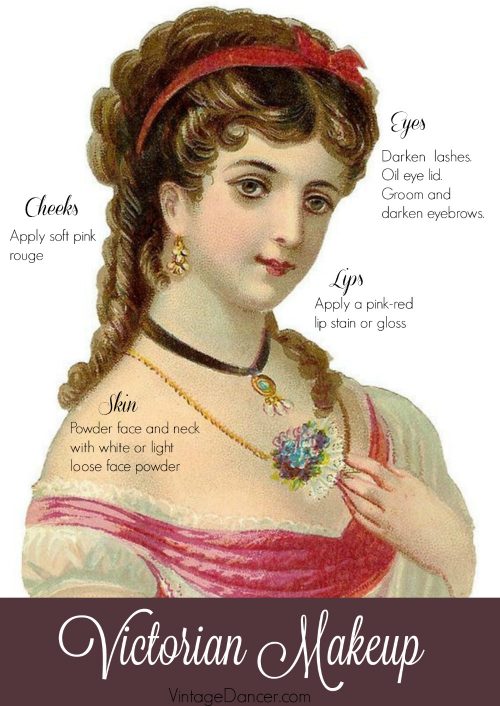
Victorian Makeup Guide
- Wash face with soap and water or steam over a hot pot (be careful!).
- Apply a cold cream and wipe away excess until damp.
- Dust white powder or one shade lighter than your complexion onto face and neck.
- Apply rouge powder / cream to the apple of cheeks.
- Apply cake mascara using your fingers. (This is is hard to do. Use brush mascara if you need to.)
- Groom eyebrows with fingers. Darken with mascara or powder.
- Apply oil or Vaseline to eyelids or use a tiny smudge of mascara on upper eyelid line (best for evenings).
There are two choices when it comes to Victorian makeup: reproduction or modern makeup. Both have their pros and cons. I applied makeup using both options below so you can see the subtle difference. Both started with a face cream and splash of violet water. On the Left, I used authentic reproduction makeup: LBCC face powder, Besame rouge for cheeks and lips, and Besame cake mascara for eyes and eyebrows. On the right, I used BareMinerals face powder, black mascara and eyeliner, brown eyebrow pencil, powder blush, and red lip gloss.
Can you see the difference? Modern makeup provides better coverage and deeper colors. Reproduction makeup is light and natural. You won’t change your look with repro makeup, but the final result is exactly like what it would have been in Victorian times. My usual choice is to use a bit of both. Modern face powder, repro blush, and gloss for my lips.
- Victorian Makeup using Reproduction Makeup
- Victorian Makeup using Modern Makeup
Would you like to make your own Victorian makeup? Try one of these recipes. You may need to read this article on how you can and can’t replicate Victorian makeup ingredients first.
If you’d rather purchase reproduction Victorian makeup, I highly recommend LBCC Little Bits on Etsy. They use historic recipes, but sometimes modern ingredients for a wide range of face lotions, lip tints, toilet water, rouge, powers, and hair pomades.
Willow and Birch has a lovely line of Victorian beauty creams and scents.
Besame designs makeup from the Edwardian teens to the 60s. Many of their early makeups will work for the Victorian era.
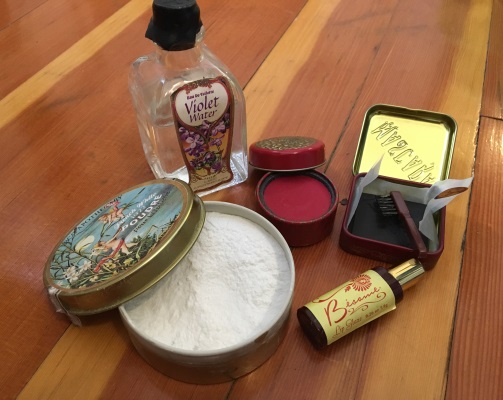
My LBCC and Besame Reproduction Makeup
Remember, for most of the Victorian era, wearing makeup was never supposed to be noticeable. Do as the Victorians did and keep it light and natural — and never admit to wearing makeup!
Victorian Beauty Tools
A lady’s dressing table or vanity was a beautiful collection of beauty products including combs for her hair, bottles of perfume, and small canisters of makeup. Those women who were secretive about their use of cosmetics re-used old prescription bottles and filled them with lotions and creams. Some went as far as to buy toilet boxes or medicine chests with hidden compartments.
A lady’s vanity was complete with a few boxes to hold her beauty products. A jewelry box held her necklaces, brooches, rings, earrings, and hat pins. A glove box held two or three pairs of gloves, although this was often tucked into a dresser instead of left out on the vanity. An odor case held one to three small bottles of perfume. A toil case held brushes, combs, and hand mirror with small compartments for “other items.” A manicure box held all the tools to make hands and nails pretty. Each box was lined in satin or velvet, with etched silver trim around a fine wood grain case. They were as beautiful inside as they were outside.
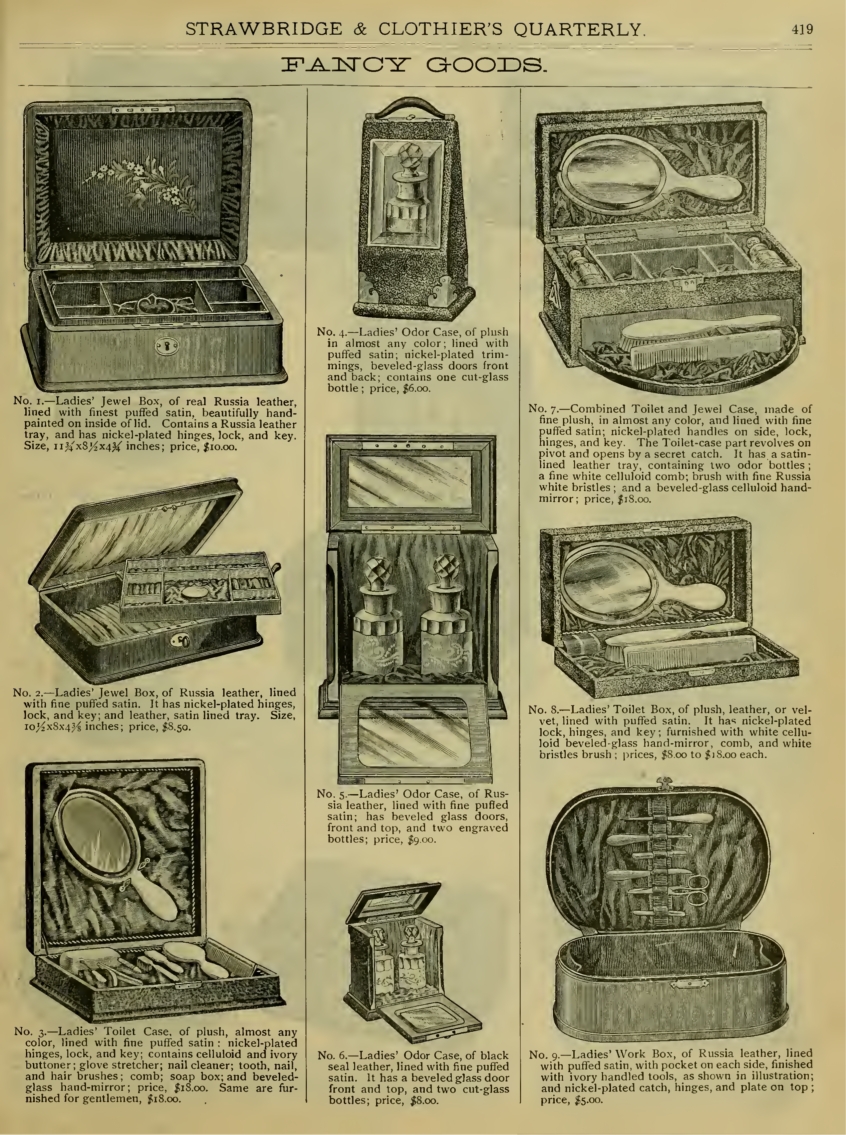
1883 Jewelry, Toilet, and Odor Boxes
On top of her vanity but not tucked away was likely a powder jar – usually a cut glass jar with a silver screw-on lid. Etched metal (and later on ceramic) jars were ornately decorated. Many glass jars came in pretty pastel colors, some hand-painted with flowers. Perfume bottles, too, were especially beautiful with smooth or cut glass and silver trim.
Dressing with your Victorian Trading Co. collection of combs, mirrors, makeup brushes, bottles, and jars will help you feel like a Victorian lady at home. Add to it some homemade or reproduction Victorian cosmetics for the ultimate beauty routine.
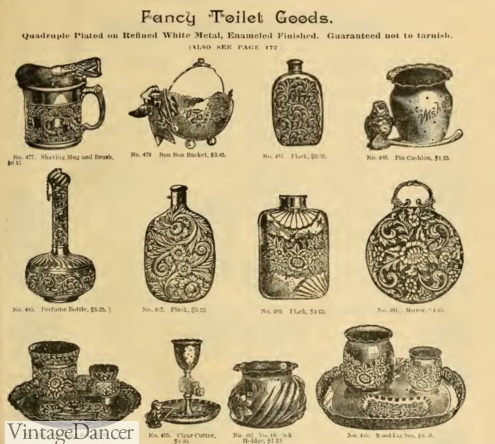
1890 Fancy Bottles, Cups, Vanity Set
Shop Victorian Makeup and Beauty Products
More Victorian Fashion History
I have recently added more articles about Victorian fashion history to the website. These articles are repurposed from an out of copyright book published in the ’60s. Over time, I will be adding additional information to them, but for now they are a wealth of knowledge:
- Victorian Gloves
- Victorian Underwear – Article is below shopping links
- Victorian Hand Fans
- Victorian Stockings – Article is below shopping links
- Victorian Hats
- Victorian Hair Accessories – Shop hair pieces, wigs, hair combs, pins and hair styling books
- Victorian Hand Fans
- Victorian Men’s Fashion
Debbie Sessions has been teaching fashion history and helping people dress for vintage themed events since 2009. She has turned a hobby into VintageDancer.com with hundreds of well researched articles and hand picked links to vintage inspired clothing online. She aims to make dressing accurately (or not) an affordable option for all. Oh, and she dances too.
